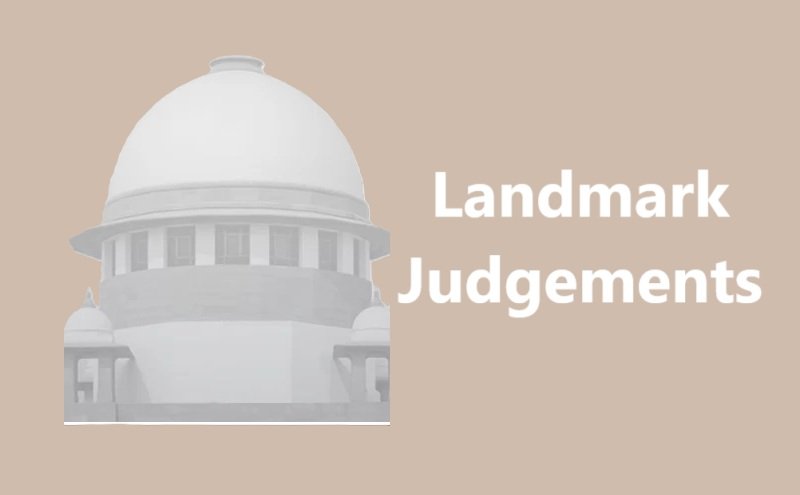
Introduction
The case of M.C. Mehta v. Union of India (1987) is a landmark judgment in the domain of environmental law in India. It played a crucial role in shaping legal principles regarding industrial liability, environmental protection, and the fundamental rights of citizens. This case arose from the infamous Oleum Gas Leak from Shriram Food and Fertilizer Industries in Delhi, which posed a serious threat to human life and the environment. The Supreme Court of India’s ruling in this case established the absolute liability principle, significantly advancing environmental jurisprudence in the country.
Background of the Case
The incident leading to this case occurred in December 1985, when a highly toxic gas, oleum, leaked from the Shriram Food and Fertilizer Industries plant in Delhi. This incident happened shortly after the 1984 Bhopal Gas Tragedy, which had already heightened concerns about industrial hazards in India. The gas leak led to health complications, causing serious injuries and even fatalities.
M.C. Mehta, a well-known environmental activist and lawyer, filed a Public Interest Litigation (PIL) under Article 32 of the Indian Constitution, seeking the closure of hazardous industries in densely populated areas. He argued that the right to life under Article 21 should include the right to live in a pollution-free environment.
Legal Issues Involved
The Supreme Court had to address several critical legal issues, including:
- The liability of enterprises engaged in hazardous activities.
- The extent of fundamental rights (Article 21) and their applicability in environmental protection.
- The validity of relocating hazardous industries from urban areas.
- The application of the Rylands v. Fletcher doctrine in Indian environmental law.
Supreme Court Judgment
The Supreme Court, in a bench led by Chief Justice P.N. Bhagwati, delivered a historic judgment. The key highlights of the ruling were:
- Absolute Liability Principle:
- The Court evolved the principle of absolute liability, which went beyond the strict liability rule established in Rylands v. Fletcher (1868).
- Under absolute liability, if an enterprise engages in hazardous or inherently dangerous activities, it is liable for any damage caused, regardless of whether negligence is proved.
- This meant that industries dealing with hazardous substances had to bear full responsibility for any harm caused, with no exceptions.
- Article 21 – Right to a Healthy Environment:
- The judgment reinforced the interpretation of Article 21, stating that the right to life includes the right to a clean and pollution-free environment.
- The Court emphasized that the government must ensure industries comply with environmental norms to prevent health hazards.
- Public Interest and Relocation of Hazardous Industries:
- The Court ruled that industries handling dangerous substances should be relocated away from densely populated areas.
- It directed the government to take proactive measures to prevent environmental disasters and protect citizens’ health and safety.
- Compensation and Environmental Responsibility:
- The Court laid the groundwork for compensatory jurisprudence in environmental law, holding that industries must compensate victims of pollution-related incidents adequately.
Significance of the Judgment
The M.C. Mehta v. Union of India (1987) judgment had far-reaching implications for environmental governance in India:
- Development of Environmental Jurisprudence:
- This case significantly contributed to the expansion of environmental law in India and established new principles to protect citizens from industrial hazards.
- Strengthening of the Polluter Pays Principle:
- The absolute liability doctrine reinforced the idea that industries must take full responsibility for environmental damages, leading to stricter pollution control norms.
- Legislative Impact:
- The judgment led to the enactment of several environmental laws and regulatory measures, including amendments to the Environment Protection Act, 1986.
- Encouragement of Public Interest Litigations (PILs):
- This case encouraged environmental activists and lawyers to use PILs as a tool for ensuring environmental justice.
Conclusion
M.C. Mehta v. Union of India (1987) remains one of the most influential judgments in India’s environmental law history. The Supreme Court’s decision to establish the absolute liability principle marked a shift towards stricter industrial accountability and reinforced the idea that economic progress should not come at the cost of environmental degradation. This case set a precedent for future environmental litigation, ensuring better regulatory mechanisms and legal safeguards against industrial pollution in India.
It remains a cornerstone of Indian environmental jurisprudence, emphasizing that the right to life includes the right to a safe and healthy environment.
Recommended:
1. Kesavananda Bharati v. State of Kerala (1973)
2. Maneka Gandhi v. Union of India (1978)







